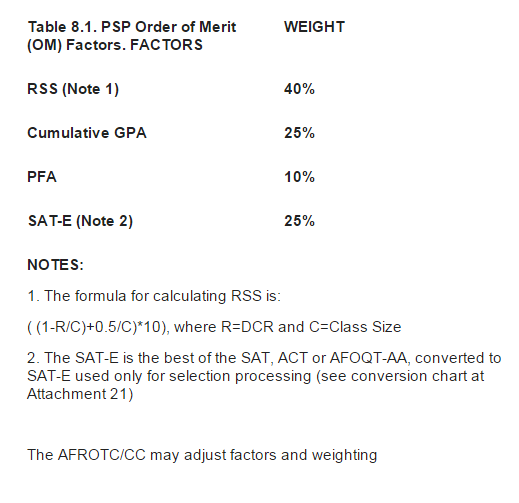Just noticed this thread. As far as EA's go here is the formula they use to calculate your score

Don't know what all the variable names in the RSS formula mean though. It was given to me earlier this year. These are the only things that go into decisions for EA's.
I will say that I have seen trends as far as average GPA's for EA's given for different universities. For example, one school I know has an average GPA of 3.5-3.6 for cadets who earn an EA. Another school that is much harder has an average GPA of 3.2-3.3. So I'm assuming that they give more leeway to cadets are harder schools as far as GPA goes. I don't think they give much more advantages other than the, but I wouldn't really call it an advantage because the harder the school it is the harder it is to get good grades. My best guess is to ask your cadre what the average stats are for cadets who earn EA's at your school. You aren't competing against the people at your school. You are going into a national pool, but like I said before you do tend to see some general trends

Don't know what all the variable names in the RSS formula mean though. It was given to me earlier this year. These are the only things that go into decisions for EA's.
I will say that I have seen trends as far as average GPA's for EA's given for different universities. For example, one school I know has an average GPA of 3.5-3.6 for cadets who earn an EA. Another school that is much harder has an average GPA of 3.2-3.3. So I'm assuming that they give more leeway to cadets are harder schools as far as GPA goes. I don't think they give much more advantages other than the, but I wouldn't really call it an advantage because the harder the school it is the harder it is to get good grades. My best guess is to ask your cadre what the average stats are for cadets who earn EA's at your school. You aren't competing against the people at your school. You are going into a national pool, but like I said before you do tend to see some general trends
